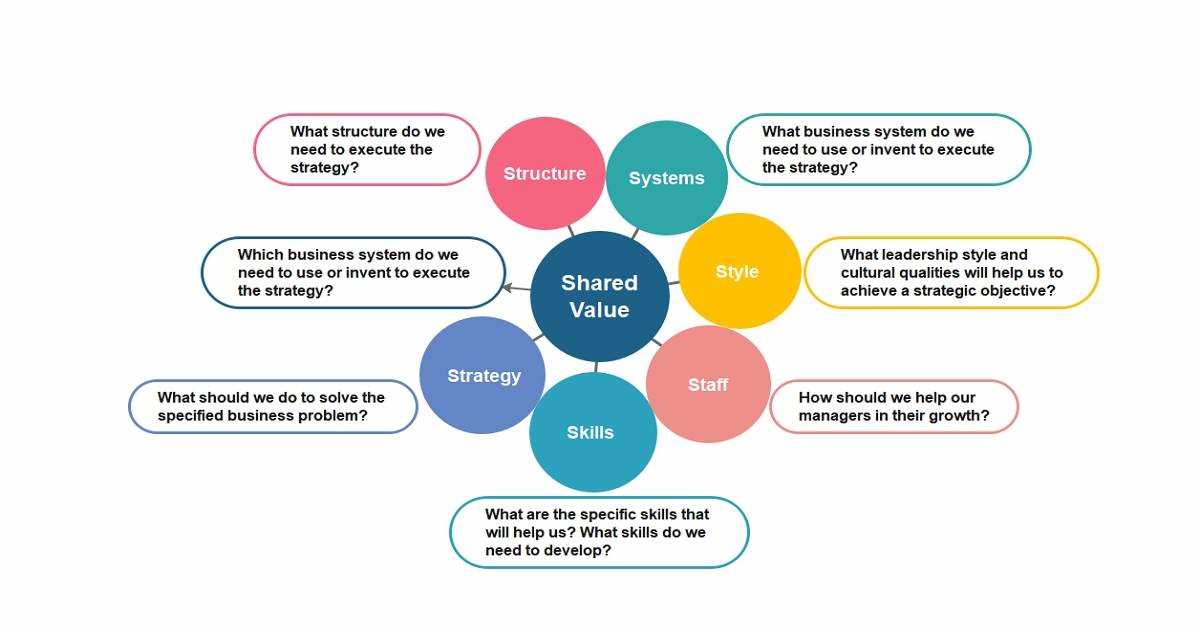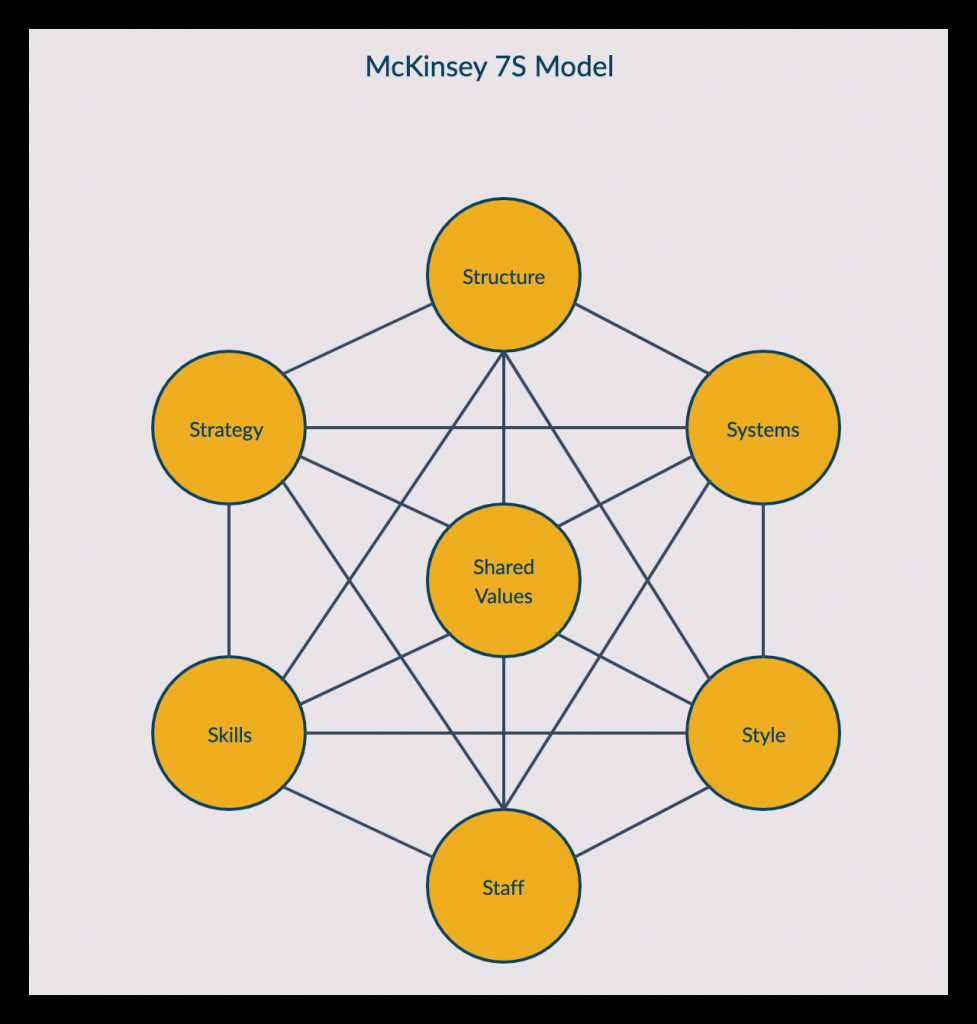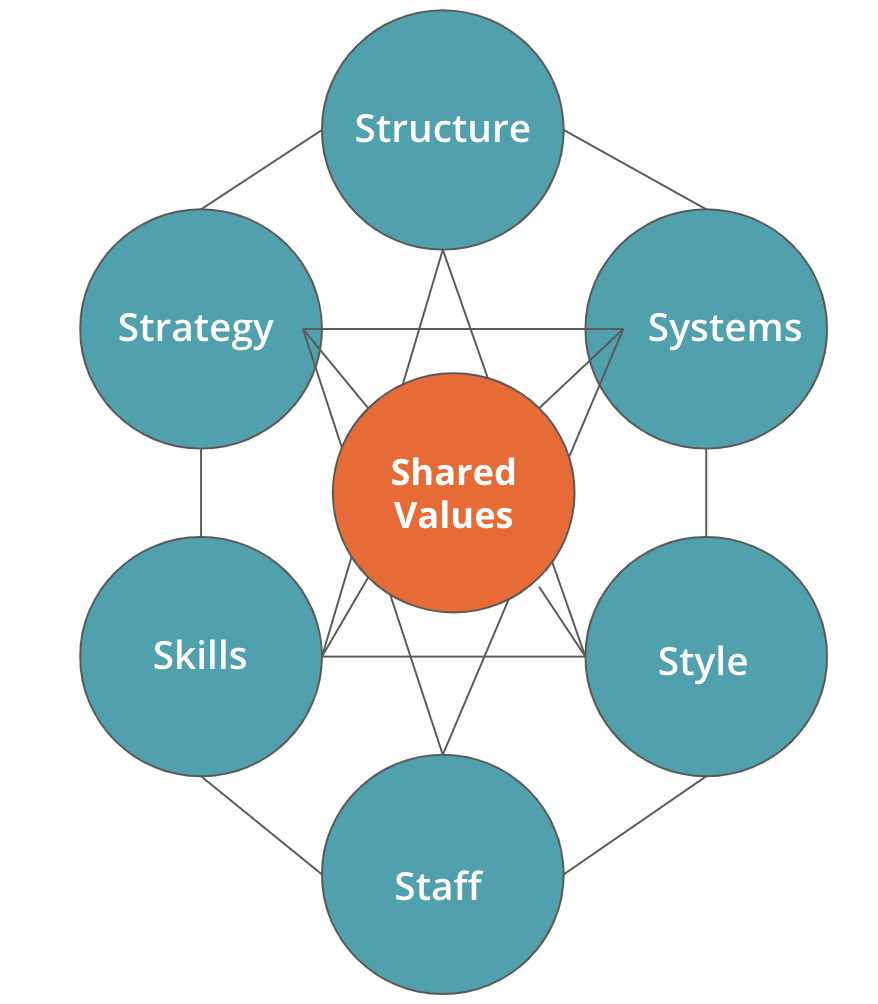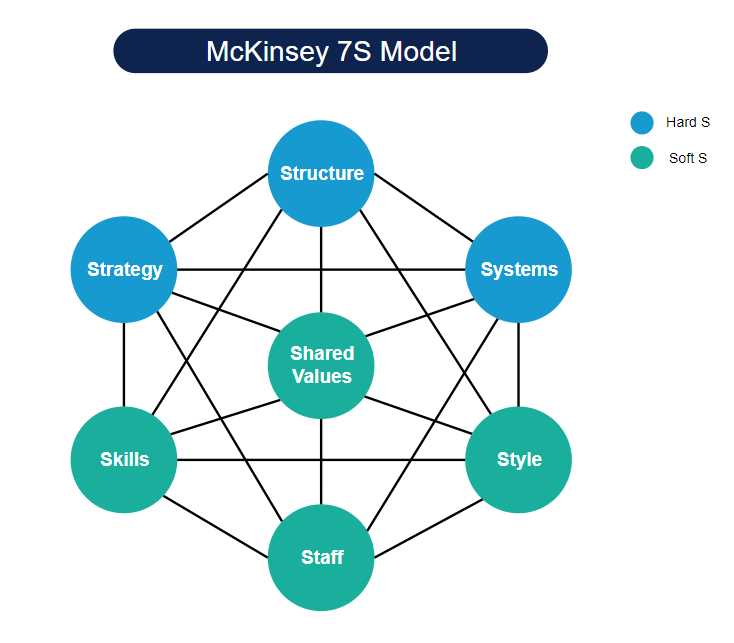What is the McKinsey 7-S Model?
The McKinsey 7-S Model is a strategic management tool that helps organizations assess and align various elements within their business to achieve their goals. Developed by consulting firm McKinsey & Company in the 1980s, the model emphasizes the interconnectedness of different components and their impact on overall organizational effectiveness.
The model is based on the idea that for an organization to succeed, all seven elements must be aligned and mutually reinforcing. These elements are:
- Strategy: The organization’s plan for achieving its goals and objectives.
- Structure: The way the organization is organized and how tasks and responsibilities are divided.
- Systems: The processes and procedures that support the organization’s operations.
- Skills: The capabilities and competencies of the organization’s employees.
- Staff: The people within the organization and their roles and responsibilities.
- Style: The leadership style and culture of the organization.
- Shared Values: The core values and beliefs that guide the organization’s actions and decision-making.
According to the model, these seven elements are interdependent, meaning that changes in one element will impact the others. For example, a change in strategy may require a change in structure or skills to support the new direction. By assessing and aligning these elements, organizations can improve their overall performance and increase their chances of success.
The McKinsey 7-S Model can be used in various strategic planning activities, such as mergers and acquisitions, organizational restructuring, and change management. It provides a framework for analyzing the current state of the organization and identifying areas for improvement. By considering all seven elements, organizations can develop a comprehensive strategy that takes into account the various factors that contribute to their success.
How to Apply the McKinsey 7-S Model in Strategic Planning

Step 1: Define the Desired Outcome
The first step in applying the McKinsey 7-S Model is to clearly define the desired outcome or objective of the strategic planning process. This could be improving organizational performance, entering new markets, or increasing customer satisfaction.
Step 2: Identify the Seven Elements

Next, identify and analyze the seven elements of the McKinsey 7-S Model:
- Strategy: This refers to the plan of action to achieve the desired outcome.
- Structure: This includes the organization’s hierarchy, reporting lines, and division of labor.
- Systems: These are the processes and procedures that guide the organization’s operations.
- Shared Values: These are the core beliefs and values that shape the organization’s culture.
- Skills: This refers to the capabilities and competencies of the organization’s employees.
- Staff: This includes the number and types of employees needed to execute the strategy.
- Style: This refers to the leadership and management style within the organization.
Step 3: Assess the Interactions
Once the seven elements have been identified, assess how they interact with each other. Determine if there are any misalignments or gaps between the elements that could hinder the achievement of the desired outcome.
Step 4: Develop Action Plans

Based on the assessment of the interactions, develop action plans to align the seven elements of the McKinsey 7-S Model. This may involve making changes to the strategy, structure, systems, shared values, skills, staff, or style of the organization.
Step 5: Implement and Monitor

Implement the action plans and monitor their effectiveness. Regularly review and adjust the plans as needed to ensure ongoing alignment and progress towards the desired outcome.
By following these steps, organizations can effectively apply the McKinsey 7-S Model in their strategic planning process. This model provides a holistic framework for assessing and aligning the various elements of an organization, ultimately leading to improved performance and success.

Emily Bibb simplifies finance through bestselling books and articles, bridging complex concepts for everyday understanding. Engaging audiences via social media, she shares insights for financial success. Active in seminars and philanthropy, Bibb aims to create a more financially informed society, driven by her passion for empowering others.
